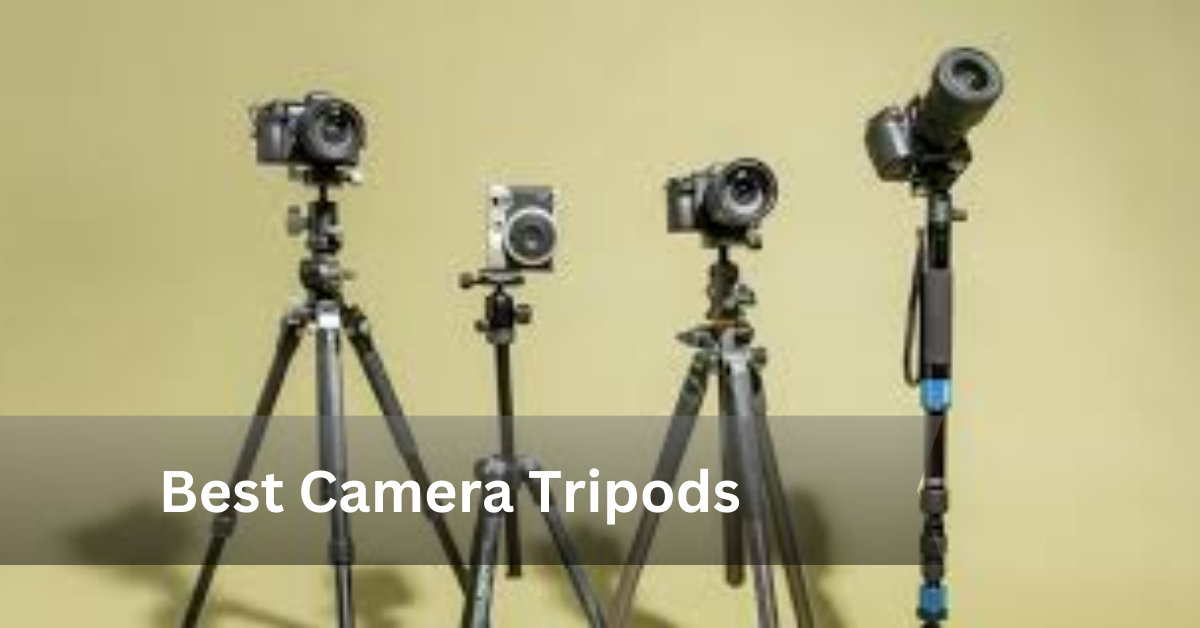A shaky camera can ruin even the most perfectly composed shot. Whether you’re capturing landscapes, shooting video, or working in a studio, a high-quality tripod is essential for stability, sharpness, and creative flexibility. But with so many options on the market, which one should you choose?
Best Camera Tripods ensure stability, sharpness, and precision for photographers and videographers.
Stability is the foundation of great photography and videography. A reliable tripod eliminates motion blur and allows for precise compositions, long-exposure shots, and smooth panning for video. Choosing the right tripod ensures you get the best performance for your specific shooting style.
In this guide, we’ll explore the best tripods in 2025, categorized by budget, use case, and features.
What to Consider When Choosing a Camera Tripod
Types of Tripods
Tripods come in various designs to suit different photography styles. Here are the main types:
- Travel Tripods: Lightweight, compact, and easy to carry for on-the-go photographers.
- Studio Tripods: Heavy-duty tripods with maximum stability for professional studio shoots.
- Video Tripods: Designed for smooth panning and tilting movements, essential for filmmakers.
- Compact Tripods: Small and portable options for mirrorless cameras and lightweight setups.
- Tabletop Tripods: Mini tripods perfect for vlogging, streaming, or macro photography.
Material & Build Quality
The material of your tripod affects its weight, durability, and performance:
- Aluminum: Affordable and sturdy but heavier than carbon fiber.
- Carbon Fiber: Lightweight, strong, and better at absorbing vibrations but more expensive.
Height & Load Capacity
Choosing the right height and weight capacity is crucial:
- Maximum Height: Consider a tripod that reaches at least eye level for comfortable shooting.
- Load Capacity: Ensure the tripod can support your camera and lens without wobbling.
Tripod Head Types
The tripod head determines how you position and adjust your camera:
- Ball Head: Quick adjustments, great for still photography.
- Pan/Tilt Head: Precise control, ideal for video and landscape photography.
- Gimbal Head: Designed for heavy telephoto lenses, perfect for wildlife and sports photography.
Portability & Weight
If you travel frequently, portability is key:
- Lightweight tripods (under 3 lbs) are best for travelers.
- Foldable designs help reduce storage space.
- Quick-release mechanisms make setup faster.
Best Camera Tripods in 2025 – Top Picks by Category
To help you find the perfect tripod, we’ve categorized the best options based on specific needs and budgets.
Best Overall Tripod – Peak Design Travel Tripod (Carbon Fiber)
Compact, lightweight, and incredibly stable, this tripod is perfect for both professionals and enthusiasts.
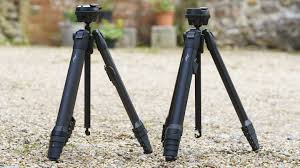
Key Features:
- Material: Carbon fiber (also available in aluminum)
- Weight: 2.8 lbs
- Maximum Height: 60 inches
- Load Capacity: 20 lbs
- Folded Length: 15.4 inches
Ideal For: Travel, landscape, and general photography
Pros:
✅ Extremely lightweight and portable
✅ Quick and intuitive setup
✅ Compact design without sacrificing stability
Cons:
❌ Premium price tag
Best Budget Tripod – Manfrotto Element MII Aluminum Tripod
A solid, affordable option that doesn’t compromise on quality.
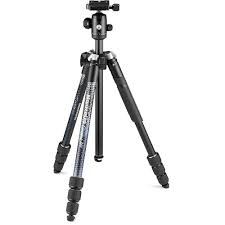
Key Features:
- Material: Aluminum
- Weight: 3.5 lbs
- Maximum Height: 63 inches
- Load Capacity: 17.6 lbs
- Folded Length: 16 inches
Ideal For: Beginners and hobbyists on a budget
Pros:
✅ Affordable without sacrificing durability
✅ Lightweight and compact
✅ Smooth ball head for easy adjustments
Cons:
❌ Not as sturdy in windy conditions
Best Tripod for Videography – Sachtler Flowtech 75 MS
Designed for filmmakers who need stability and fluid movement.
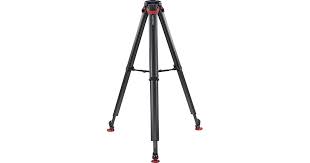
B&H
Key Features:
- Material: Carbon fiber
- Weight: 7.9 lbs
- Maximum Height: 61.8 inches
- Load Capacity: 44 lbs
- Fluid Head: Yes, for smooth video movements
Ideal For: Professional videographers and filmmakers
Pros:
✅ Innovative fast deployment system
✅ Exceptional stability and durability
✅ Adjustable height with quick-release locks
Cons:
❌ Heavier than typical photography tripods
❌ High price point
Best Compact & Lightweight Tripod – Gitzo Traveler Series 1
A premium travel tripod that offers high-end performance in a small package.
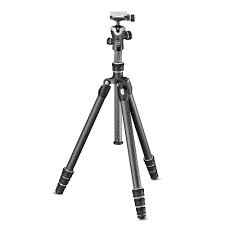
Key Features:
- Material: Carbon fiber
- Weight: 2.3 lbs
- Maximum Height: 60.2 inches
- Load Capacity: 22 lbs
- Folded Length: 14.4 inches
Ideal For: Travel photographers needing a lightweight yet durable tripod
Pros:
✅ Ultra-lightweight design
✅ High-quality build and durability
✅ Excellent stability for its size
Cons:
❌ Pricey for casual users
Best Heavy-Duty Tripod – RRS TVC-34L Versa Series 3
Built for professionals who require extreme stability and durability.
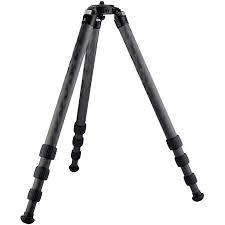
Key Features:
- Material: Carbon fiber
- Weight: 5.3 lbs
- Maximum Height: 68 inches
- Load Capacity: 50 lbs
- Folded Length: 23.2 inches
Ideal For: Studio photography, wildlife, and long-exposure shots
Pros:
✅ Rock-solid stability
✅ Supports heavy camera setups
✅ High build quality for professional use
Cons:
❌ Bulky and not travel-friendly
❌ Expensive
Tripod Comparison Chart
| Tripod Model | Best For | Material | Max Height | Load Capacity | Weight | Price Range |
| Peak Design Travel Tripod | Best Overall | Carbon Fiber | 60″ | 20 lbs | 2.8 lbs | $$$$ |
| Manfrotto Element MII | Best Budget | Aluminum | 63″ | 17.6 lbs | 3.5 lbs | $$ |
| Sachtler Flowtech 75 MS | Best for Video | Carbon Fiber | 61.8″ | 44 lbs | 7.9 lbs | $$$$$ |
| Gitzo Traveler Series 1 | Best Lightweight | Carbon Fiber | 60.2″ | 22 lbs | 2.3 lbs | $$$$$ |
| RRS TVC-34L Versa 3 | Best Heavy-Duty | Carbon Fiber | 68″ | 50 lbs | 5.3 lbs | $$$$$ |
Best Camera Tripods by Category
Budget-Friendly Picks
- Best under $50: Affordable tripods with decent stability for casual photography.
- Best under $100: Mid-range options with better durability and adjustability for beginners.
Best for Travel
- Lightweight & Compact Tripods: Designed for portability, ideal for photographers on the go. Look for foldable legs and under 3 lbs weight.
Best for Professionals
- High-End Tripods with Advanced Features: Built with premium materials like carbon fiber, featuring precise adjustments, modular components, and high load capacities.
Best for Videography
- Fluid Head Tripods for Smooth Panning: Offers seamless motion control, perfect for cinematographers and YouTubers creating dynamic video content.
Best for Studio & Heavy Cameras
- Sturdy Tripods with High Load Capacity: Built for stability, supporting heavy DSLRs, telephoto lenses, and studio lighting setups.
| Tripod | Price | Weight | Max Load | Best For |
| XYZ Model | $99 | 2.5 lbs | 10 lbs | Travel |
| ABC Model | $299 | 5 lbs | 20 lbs | Studio |
Best Tripod Brands Compared
Manfrotto vs. Benro – Stability, Pricing & Durability
- Manfrotto: Known for professional-grade tripods with sturdy aluminum or carbon fiber builds.
- Benro: Offers competitive pricing with a focus on innovation and lightweight designs.
Joby vs. Peak Design – Best for Vlogging & Travel
- Joby: Creator of the famous GorillaPod, great for flexible positioning and vlogging.
- Peak Design: Premium, ultra-compact tripods ideal for minimalists and travel photographers.
Gitzo vs. RRS (Really Right Stuff) – High-End Tripods for Professionals
- Gitzo: Market leader in carbon fiber tripods, offering unmatched stability and lightweight design.
- RRS (Really Right Stuff): High-end American-made tripods favored by professionals for precision engineering and durability.
Buying Guide: Choosing the Right Tripod
When selecting a tripod, several factors come into play, including height, weight capacity, price, size, type, and brand. This guide will help you understand what to look for in a tripod, ensuring you find the best option for your needs.
1. Heights: What Is a Good Tripod Height?
- A good tripod height depends on your shooting style and comfort.
- Eye-Level Height: The best tripods extend to at least your eye level (~55-65 inches) to avoid excessive bending.
- Compact Options: Travel tripods fold down to 12-18 inches for easy portability.
- Studio or Heavy-Duty Tripods: These can reach 70 inches or more for professional use.
✅ Tip: Choose a tripod that reaches your eye level without extending the center column, as using the column reduces stability.
2. Weight: How Much Weight Can a Camera Tripod Hold?
- Lightweight tripods (for smartphones and compact cameras) hold 2-6 lbs.
- Mid-range tripods support 10-15 lbs, great for mirrorless and DSLR cameras.
- Heavy-duty tripods hold 25+ lbs, ideal for large DSLRs, telephoto lenses, and video equipment.
✅ Tip: Your tripod should support at least 1.5x the weight of your camera and lens for stability
3. Price: How Much Does a Tripod Cost?
Tripods come in various price ranges:
- Budget ($20-$100) – Basic aluminum tripods for beginners.
- Mid-Range ($100-$300) – Solid tripods with better stability and features.
- Professional ($300-$1,500+) – Carbon fiber tripods with high-end precision.
✅ Tip: If you shoot often, invest in a durable and stable tripod rather than a cheap one.
4. Size: What Size Tripod Should I Get?
- Compact Tripods: Fold down to 12-18 inches for portability (great for travel).
- Standard Tripods: Fold to 22-28 inches with extended heights up to 65 inches.
- Large Studio Tripods: Can extend over 70 inches for full-sized cameras.
✅ Tip: Consider where you’ll use the tripod (indoor, outdoor, or travel) before deciding on size.
5. Types: What Are the Types of Tripods?
Tripods vary based on usage:
- Travel Tripods – Lightweight, foldable, and portable.
- Studio Tripods – Large, heavy-duty, and highly stable.
- Video Tripods – Equipped with fluid heads for smooth panning.
- Tabletop Tripods – Small, flexible, and great for vlogging.
- Gimbal Tripods – Used for stabilizing moving shots.
✅ Tip: Choose a tripod that fits your shooting environment.
6. Popular Brands: Including JOBY, Manfrotto, GoPro
Some of the most trusted tripod brands:
- JOBY – Best for vlogging & flexible GorillaPods.
- Manfrotto – High-quality tripods for photo & video.
- GoPro – Compact, lightweight, and action-camera friendly.
- Gitzo – Premium carbon fiber tripods for professionals.
- Peak Design – Sleek, modern, and travel-friendly tripods.
✅ Tip: Stick with reputable brands for durability and reliability.
7. Shutter Speed: What Is the Slowest Shutter Speed You Can Use Before You Need a Tripod?
A general rule:
- 1/focal length rule – If you’re shooting at 50mm, keep your shutter speed 1/50s or faster to avoid motion blur.
- For long exposures (below 1/30s), a tripod is highly recommended.
- Night photography & low-light conditions require a tripod for any shutter speed slower than 1/60s.
✅ Tip: Use a tripod for long exposure, astrophotography, and low-light conditions.
8. Mount: What Type of Mount Is on a Tripod?
Most tripods use a standard 1/4-inch screw mount, which fits DSLRs, mirrorless cameras, and smartphones (with an adapter).
- Quick-release plates make switching cameras easier.
- Some professional tripods have a 3/8-inch mount for heavy equipment.
✅ Tip: Check if your camera is compatible with the tripod mount.
9. Gimbal Heads: What Is a Ball Head Tripod?
- Ball Head – Allows smooth, 360-degree rotation, quick adjustments, and flexibility.
- Gimbal Head – Ideal for telephoto lenses and wildlife photography, balancing heavy setups.
- Pan/Tilt Head – Precise adjustments, best for video shooting.
✅ Tip: Choose ball heads for photography and fluid/gimbal heads for video and telephoto lenses.
Finding Your Perfect Tripod
When choosing a tripod, consider:
✔ Height – Should match your eye level.
✔ Weight Capacity – Must support your camera gear.
✔ Portability – Choose lightweight for travel, sturdy for studios.
✔ Price & Brand – Invest in a reliable tripod from top brands.
✔ Tripod Head Type – Ball heads for flexibility, fluid heads for video.
Insights from Real Users on Top-Rated Tripods
User reviews offer valuable insights into the real-world performance of tripods. Here’s a look at what customers have to say about some of the most popular models:
- Manfrotto MT055CXPRO4
Pros: Excellent stability for heavy cameras, easy to set up, sturdy carbon fiber legs.
Cons: Slightly heavier than other travel tripods.
User Review: “Perfect for studio work and landscapes. The carbon fiber design is solid, but it’s not the lightest option if you’re planning on long hikes.” - JOBY GorillaPod 5K
Pros: Flexible legs, compact, great for vlogging and unconventional shooting angles.
Cons: Not as sturdy as full-sized tripods for heavy DSLR setups.
User Review: “Super versatile! I love how I can wrap it around anything for a unique perspective. However, it’s not stable enough for a heavy camera with a long lens.” - Peak Design Travel Tripod
Pros: Compact and easy to pack, quick to set up, high-quality build.
Cons: On the pricier side.
User Review: “This is my go-to tripod for travel. It fits easily into my backpack and is incredibly sturdy for its size. It’s a bit expensive, but the quality makes up for it.” - Benro Mach3 TMA38CL
Pros: Stable, good load capacity, durable.
Cons: A bit bulky for casual photographers.
User Review: “This tripod is a beast! It can hold my large DSLR with ease. However, it’s not the most portable if you’re hiking to a remote location.”
Pros & Cons of Popular Models
Here’s a quick breakdown of some top tripods:
| Tripod | Pros | Cons |
| Manfrotto MT055CXPRO4 | Durable, solid construction, professional grade. | Heavy for travel, expensive. |
| JOBY GorillaPod 5K | Flexible, compact, portable. | Not ideal for heavy DSLR setups. |
| Peak Design Travel Tripod | Easy to pack, versatile, quick setup. | Expensive for some users. |
| Benro Mach3 TMA38CL | Strong stability, great load capacity. | Bulky for travel, not very compact. |
Where to Buy the Best Camera Tripod
Online Stores
- Amazon: One of the largest marketplaces, offering a wide range of tripods with detailed customer reviews. Look out for Prime Day deals or flash sales for discounts.
Tip: Amazon often has competitive prices and fast shipping. - B&H Photo: Specializes in camera gear, providing detailed specifications and expert reviews.
Tip: They offer bundle deals that can help you save on related accessories (e.g., tripod heads, bags). - Adorama: Another trusted name in photography, often running special promotions.
Tip: Adorama’s customer service is top-notch, and they offer competitive prices on mid-to-high-end models.
Physical Stores
- Best Buy: Offers a variety of camera tripods, often with the benefit of immediate in-store pickup.
Tip: Check their weekly deals and discounts, especially around holidays or back-to-school sales. - Local Camera Shops: Supporting small businesses while getting expert advice can help you choose the right tripod.
Tip: Visit your local camera shop for personalized recommendations and the opportunity to test models in person.
Deals & Discounts
- Seasonal Sales: Black Friday, Cyber Monday, and other holiday sales are excellent opportunities to snag a tripod at a reduced price.
- Bundle Offers: Many online stores, like Amazon and B&H, offer bundles where you can get a tripod along with other accessories at a discount.
Tip: Sign up for email alerts from your favorite stores to stay informed about upcoming sales.
FAQs on the Best Camera Tripods
What is the best camera tripod for a phone?
The JOBY GorillaPod Mobile Rig is one of the best options for phone photography. Its flexible legs allow you to set up your phone in various positions, providing stability and versatility for both static shots and video recording. Another great option is the UBeesize Tripod, which is lightweight, portable, and includes a phone holder with adjustable angles.
What is the best camera tripod for photography?
For photographers, the Manfrotto MT055CXPRO4 is a top contender, offering solid stability, a carbon fiber build for lightweight portability, and versatility for different shooting styles. The Peak Design Travel Tripod is also highly recommended for its compact design and ease of use, especially for travel photographers.
What is the best camera tripod according to Reddit users?
Reddit users highly recommend Manfrotto, Joby GorillaPod, and Peak Design for various needs. For instance, Manfrotto tripods are praised for their stability and reliability, while Joby GorillaPod is loved for vlogging and flexible setup options. Peak Design is frequently discussed in travel photography subreddits due to its compact and sleek design.
What is the best camera tripod for travel?
The Peak Design Travel Tripod is considered the best for travel photographers. It’s lightweight, compact, and has a unique design that makes it easy to carry without sacrificing stability. Other great options include the MeFOTO RoadTrip Travel Tripod, which combines portability with excellent build quality.
What is the best professional tripod?
The Gitzo GT3543LS Systematic Tripod is one of the top choices for professional photographers. It is built for heavy-duty use, supporting large camera setups and providing superior stability. The Manfrotto MT055CXPRO4 is also an excellent choice for professionals looking for reliability and flexibility.
Why is the Manfrotto tripod so popular?
Manfrotto is popular due to its exceptional build quality, user-friendly design, and high stability. Whether you’re a beginner or a professional, Manfrotto tripods offer a solid balance of affordability, durability, and performance. Their extensive range of models ensures there’s something for every type of photographer.
What is the best camera tripod for beginners?
The AmazonBasics 60-Inch Tripod is a highly recommended entry-level option for beginners. It’s affordable, easy to use, and offers decent stability for those starting with photography. JOBY GorillaPod is another great choice for beginners, especially if you’re experimenting with video and creative angles.
What are the best camera tripod brands?
Some of the top brands for camera tripods include:
- Manfrotto: Known for its durability, stability, and wide range of options.
- Peak Design: Great for travel photographers and videographers due to its compact and sleek design.
- Gitzo: High-end, professional-grade tripods known for superior stability and performance.
- JOBY: Famous for its GorillaPod, which is flexible and versatile, ideal for vlogging and lightweight setups.
- Benro: Offers affordable, well-built tripods that cater to both amateurs and professionals.
These brands are widely recognized for their innovative designs, sturdy construction, and excellent customer feedback.
What tripod brands should I get, and which should I stay away from?
- Recommended Brands: Some of the best-known and trusted brands for camera tripods include Manfrotto, Gitzo, Benro, Peak Design, and Joby. These brands offer durability, stability, and reliable features suited for both professionals and enthusiasts.
- Brands to Be Cautious With: While there are many affordable tripods out there, some cheaper brands may sacrifice quality for cost. These tripods often lack stability, precision, and may not support heavy cameras properly. Be cautious with no-name brands or overly inexpensive models from unverified sellers.
The 4 Best Tripods of 2025 | Tested & Rated
Some of the top-rated tripods for 2025, based on expert testing and real-world usage, include:
- Manfrotto MT055CXPRO4 – Great for professional photographers due to its stability and carbon fiber construction.
- Peak Design Travel Tripod – Best for travelers due to its compact size and versatile features.
- Benro Mach3 TMA38CL – Excellent for heavy cameras and landscape photographers looking for durability.
- JOBY GorillaPod 5K – Best for vlogging and creative angles with its flexible legs.
What is the best brand for camera tripods?
- Manfrotto and Gitzo are often regarded as the best brands, especially for professionals due to their stability, build quality, and innovative designs. Peak Design is a top contender for travel photographers due to its portability and sleek design.
Which is better, an aluminum or carbon fiber tripod?
- Carbon Fiber tripods are generally lighter, more durable, and more stable, making them ideal for travel and outdoor photography.
- Aluminum tripods are more affordable and heavier, but they are also quite sturdy and suitable for studio or controlled environments.
What is the difference between a photo tripod and a video tripod?
- Photo tripods are designed to hold still shots and are typically more compact and lightweight.
- Video tripods offer features like fluid heads that allow for smooth panning and tilting, ideal for video recording.
How to choose a tripod for a camera?
Consider these factors when selecting a tripod:
- Weight capacity: Ensure it can support your camera and lens.
- Height: Choose a tripod that allows you to shoot at your preferred height.
- Portability: If you travel frequently, opt for lightweight, compact designs.
- Stability: Look for features like leg locks and robust materials for steady shots.
What is the difference between a cheap and expensive tripod?
- Cheap tripods may not be as durable, lightweight, or stable. They often use lower-quality materials and may lack useful features.
- Expensive tripods generally offer better materials (carbon fiber), more durable build quality, advanced features (like fluid heads), and greater stability, making them suitable for professional use.
How tall should a tripod be for photography?
A tripod should typically extend to eye level for comfort, around 5-6 feet tall, but consider your shooting style. A tripod with adjustable height (from about 2 feet to 6 feet) is ideal for versatility.
At what shutter speed do I need a tripod?
If you’re shooting below 1/60th of a second, it’s usually advisable to use a tripod to avoid motion blur. This is particularly important for low-light photography or longer exposures.
Is buying a tripod worth it?
Yes, buying a tripod is crucial for achieving stable, sharp images, especially in low light or long exposure situations. It enhances your control over the shot and allows for greater creativity.
How do you take professional pictures with a tripod?
To take professional pictures with a tripod, use proper settings for your subject (e.g., aperture, shutter speed), ensure the tripod is stable, and avoid touching the camera to minimize vibration.
Is a photographer likely to use a tripod?
Yes, photographers often use tripods for stability, especially for landscape, long exposure, architectural, and product photography.
How do I make my camera pictures look professional?
To make your photos look professional:
- Use a tripod for stability.
- Adjust settings like ISO, aperture, and shutter speed based on lighting.
- Shoot in RAW for better post-processing options.
- Pay attention to composition and lighting.
How do photographers hold their camera?
Photographers should hold their camera with both hands, using the right hand to operate the shutter and the left hand to support the lens. Stabilizing your body against a solid object can help reduce camera shake.
How do photographers keep all their photos?
Most photographers store their photos on external hard drives, cloud storage, or specialized photography management software like Lightroom or Adobe Bridge.
How should you pose before a camera?
To pose in front of a camera, ensure good posture, relax your body, and keep your chin slightly down to avoid shadows. Practice natural expressions to avoid looking stiff.
How to get steady hands for photography?
- Support your arms on a solid surface, like a table or tripod.
- Use the camera’s timer or a remote shutter release to minimize hand shake.
- Breathe deeply and steady your body to reduce nervous shaking.
How do I get sharp pictures every time?
To get sharp photos:
- Use a tripod for stability.
- Set a low ISO to minimize noise.
- Use the right aperture to ensure enough depth of field.
- Focus manually or use autofocus with the center point for precision.
How to be photogenic from every angle?
To look photogenic:
- Maintain good posture.
- Slightly angle your body rather than facing the camera directly.
- Relax your face and avoid squinting.
How do you not shake when taking pictures?
To avoid shaking:
- Use a tripod or place your camera on a stable surface.
- Use a shutter speed of at least 1/60th of a second, or faster.
- Engage the camera’s timer or a remote to avoid touching the camera.
What is the best travel tripod for photography?
The Peak Design Travel Tripod and JOBY GorillaPod 5K are popular choices for travel photographers due to their compact size, light weight, and versatile features.
How To Use a Tripod For Photography
To use a tripod effectively:
- Set up your tripod on a flat, stable surface.
- Adjust the height to suit your composition.
- Use the camera’s timer or a remote shutter release to avoid camera shake.
- Use the tripod’s tilt and pan features for dynamic shots.
How do I know what tripod fits my camera?
Check your camera’s weight and ensure the tripod’s maximum load capacity can comfortably support it. Also, check the mount type to ensure compatibility (e.g., 1/4-inch or 3/8-inch screw).
Do tripods fit every camera?
Most tripods have a standard mount (1/4-inch screw), making them compatible with most cameras. However, heavier professional cameras may require a tripod with a higher load capacity and specialized tripod head.
Can any camera go on any tripod?
Yes, but it’s essential to ensure the tripod’s weight capacity and the camera’s mount type are compatible.
What is the optimum angle for a tripod?
The optimal angle depends on your composition and subject. For landscape photography, a low angle often works well, while a high angle may be better for overhead or bird’s eye shots.
What is the best camera angle for photography?
The best camera angle often depends on the subject. For portraits, eye-level angles work best. For creative shots, try different perspectives (low or high angles) to add drama.
What are the best tripod angles?
The best tripod angles depend on your subject and creativity. Low angles for dramatic landscape shots, or eye-level angles for portraits, tend to work best.
Which camera settings should you use while using a tripod?
Use a low ISO, appropriate aperture, and shutter speed to get sharp, detailed images. Set the shutter speed according to the light conditions.
What are the 3 most important camera settings?
The three most important settings are:
- Aperture: Controls depth of field and amount of light.
- Shutter speed: Controls how long the camera’s sensor is exposed to light.
- ISO: Determines the camera’s sensitivity to light.
What are some basic tips for using a tripod correctly?
- Make sure the tripod legs are firmly planted and balanced.
- Use the center column sparingly to avoid instability.
- Lock all leg angles and joints before shooting.
What f-stop for night photography?
An f-stop of f/2.8 or lower is ideal for night photography to allow more light into the lens.
What ISO is best for night shots?
For night shots, an ISO between 800-3200 is ideal. Higher ISO values can introduce noise, so keep it as low as possible while maintaining proper exposure.
How to get sharp images in low light?
- Use a tripod.
- Set a wide aperture (low f-stop).
- Use longer exposure times with low ISO.
What is the best aperture for star photography?
An f-stop of f/2.8 or lower is ideal for capturing more light in star photography.
What is the best way to take pictures with a tripod most of the times?
For most photos, set your camera to manual mode, adjust shutter speed and aperture for proper exposure, and always use a tripod to minimize shake, especially for longer exposures.
Conclusion
Choosing the right tripod depends on your specific needs: whether you’re a professional photographer, a traveler, or a casual hobbyist. Be sure to consider factors like height, weight capacity, camera stand weight bag, and portability before making a purchase.
For best deals, consider online retailers like Amazon, B&H, and Adorama. If you prefer to try out a tripod in person, head to Best Buy or a local camera shop. Always be on the lookout for seasonal sales and bundle offers to save on your purchase.
Ready to find the perfect tripod for your photography needs? Check out our full list of top picks and find the best deal today!

